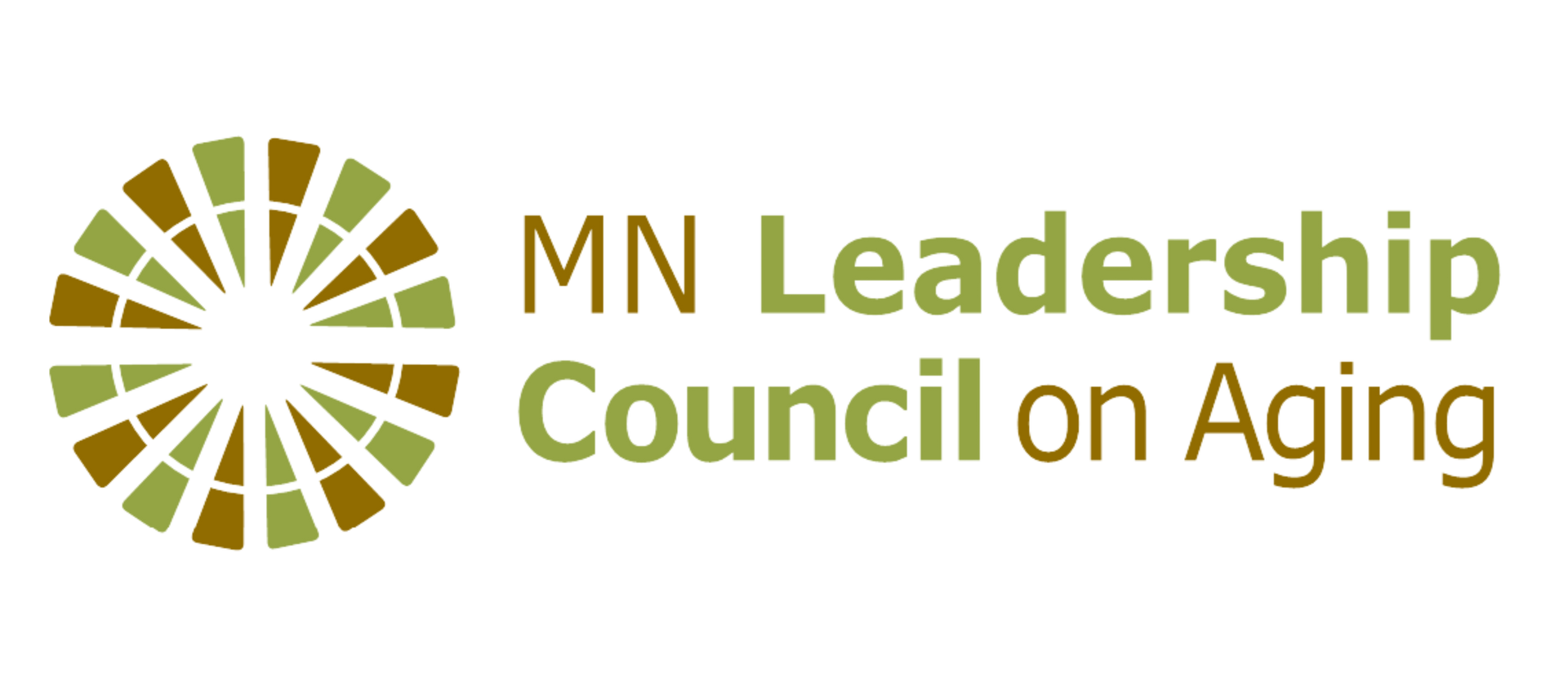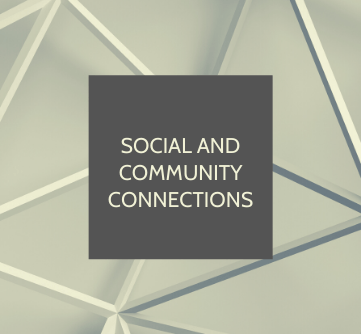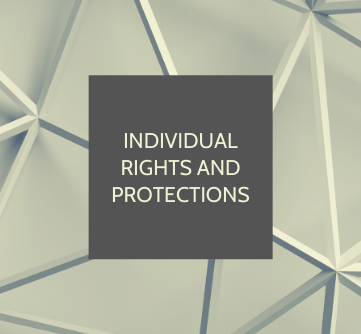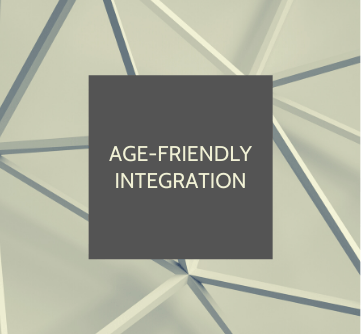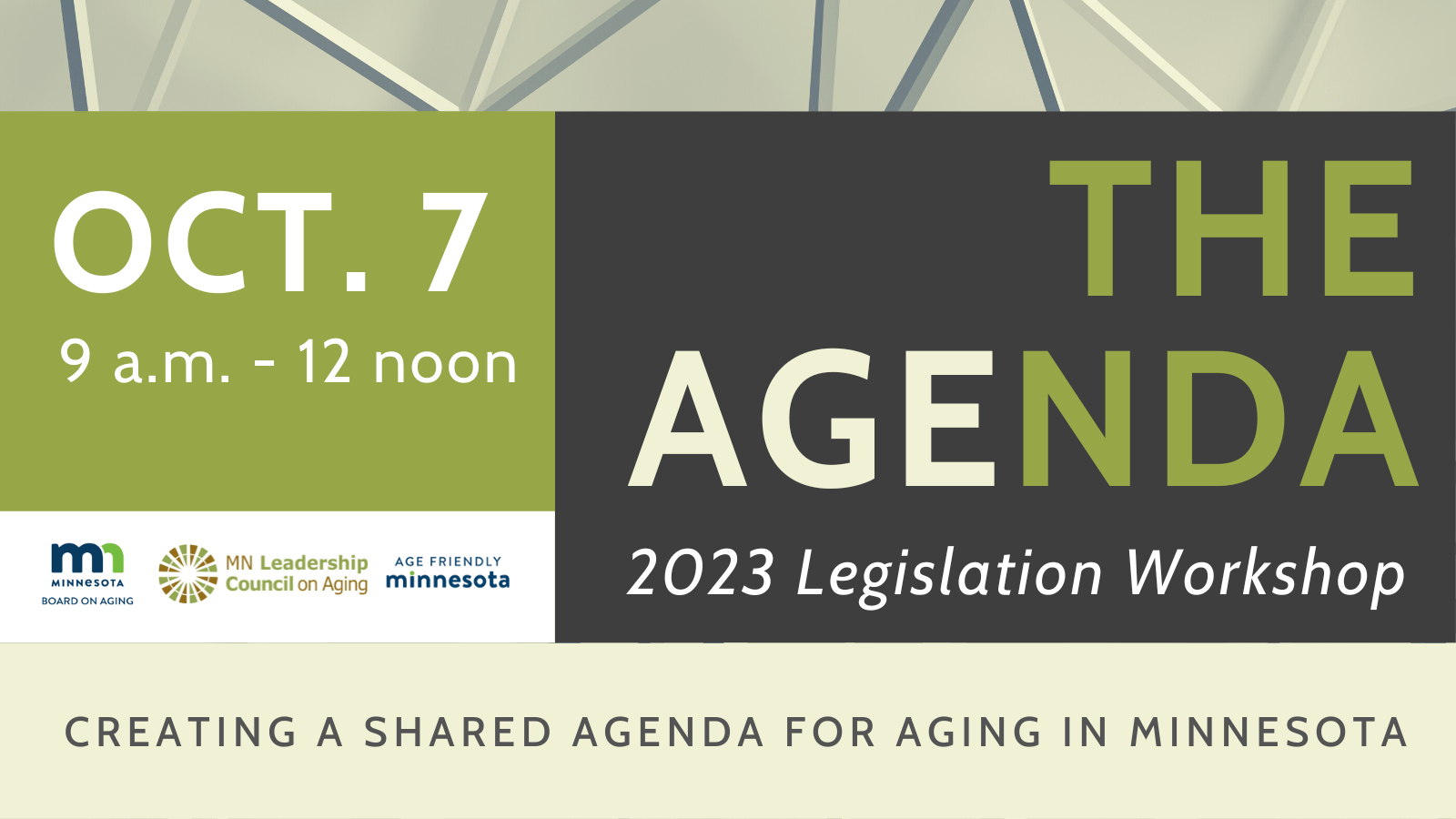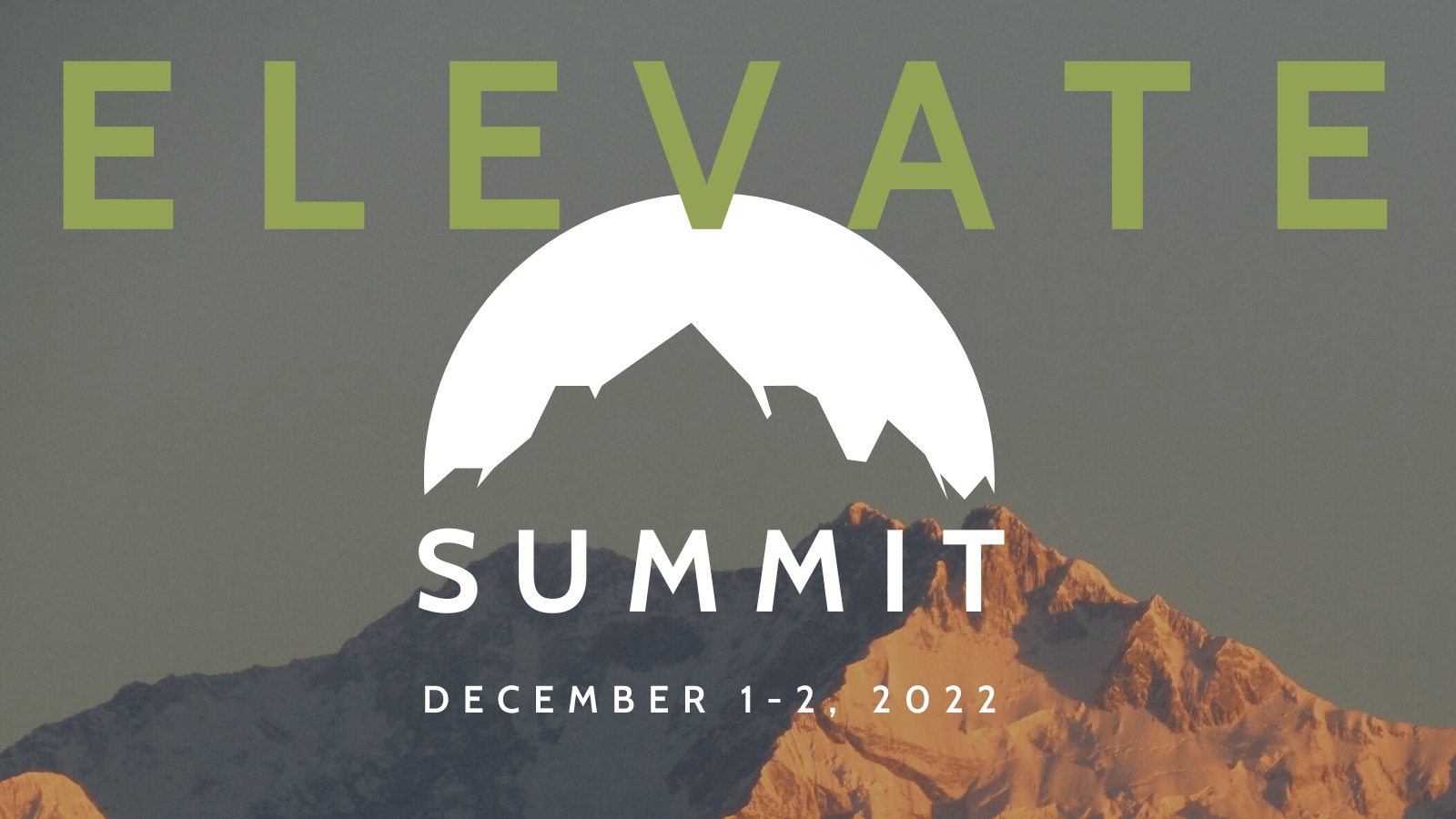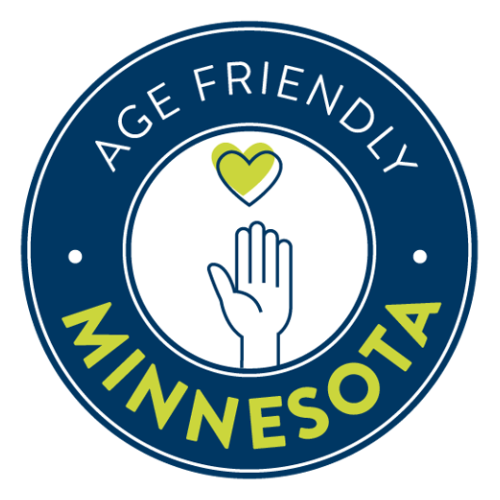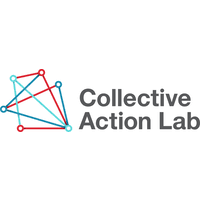THE
AGENDA
CREATING A SHARED AGENDA FOR AGING IN MINNESOTA
Leaders across the aging sector have embarked on a bold new experiment to elevate aging in Minnesota.
Starting in the winter of 2021, grounded in principles of Collective Impact Theory and guided by the team at the Collective Impact Lab, the Minnesota Leadership Council on Aging, Minnesota Age-Friendly Council and Minnesota Board on Aging co-convened an open Summit that kicked-off a public policy development process, with the long-term goal of creating a shared policy agenda for aging in Minnesota.
Co-Conveners
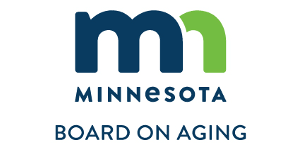
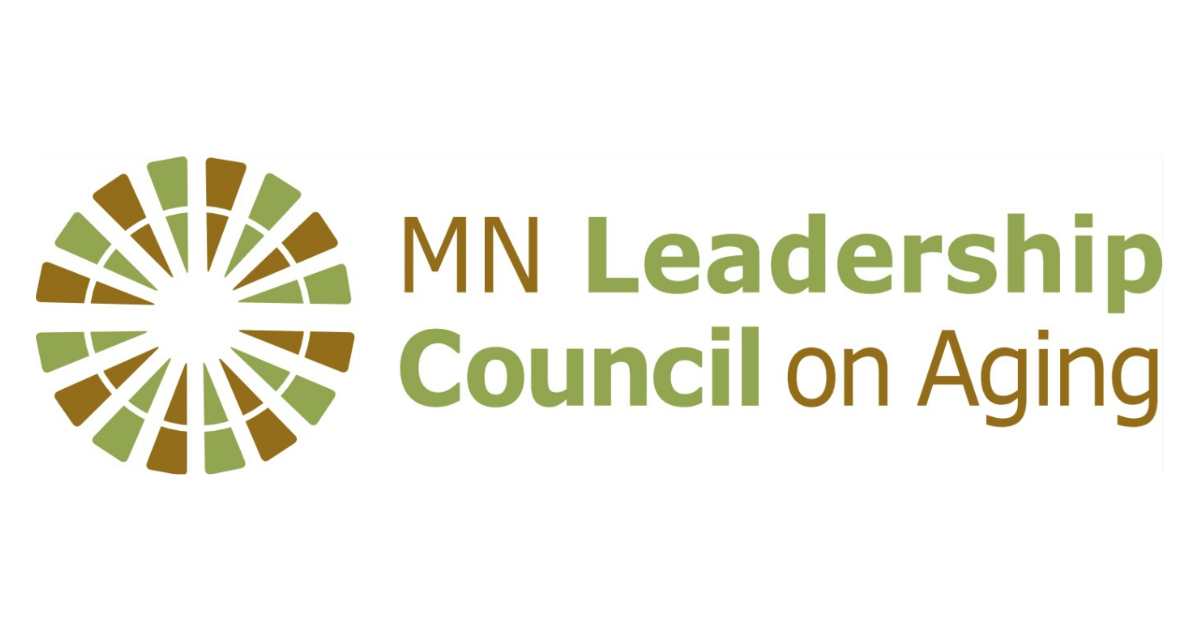
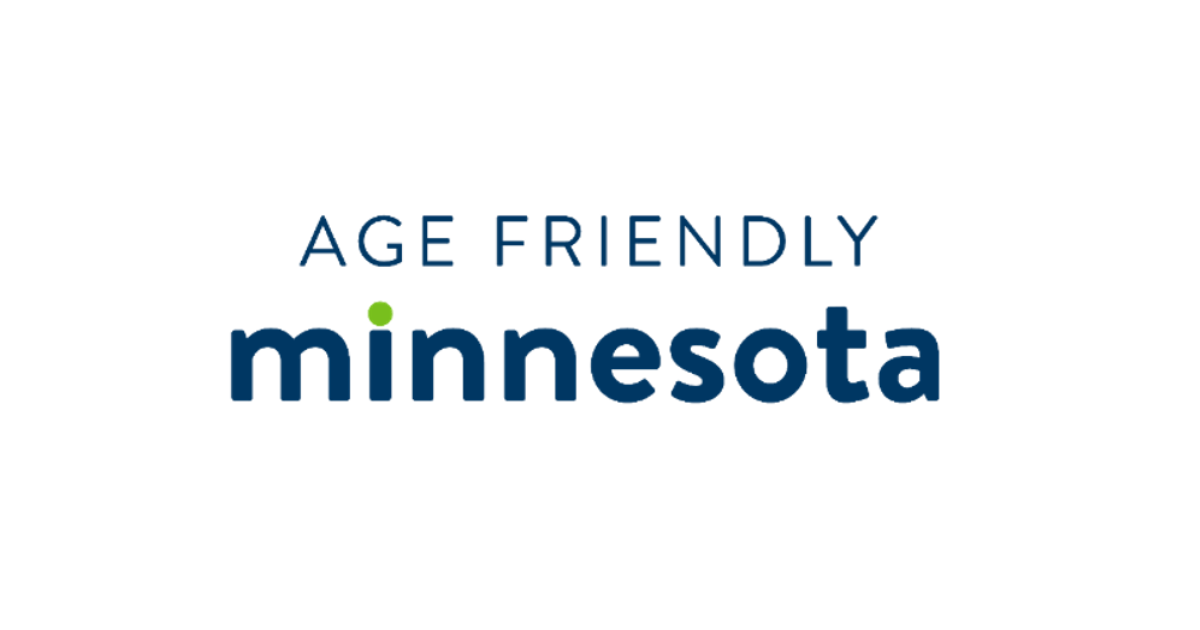
Our Approach
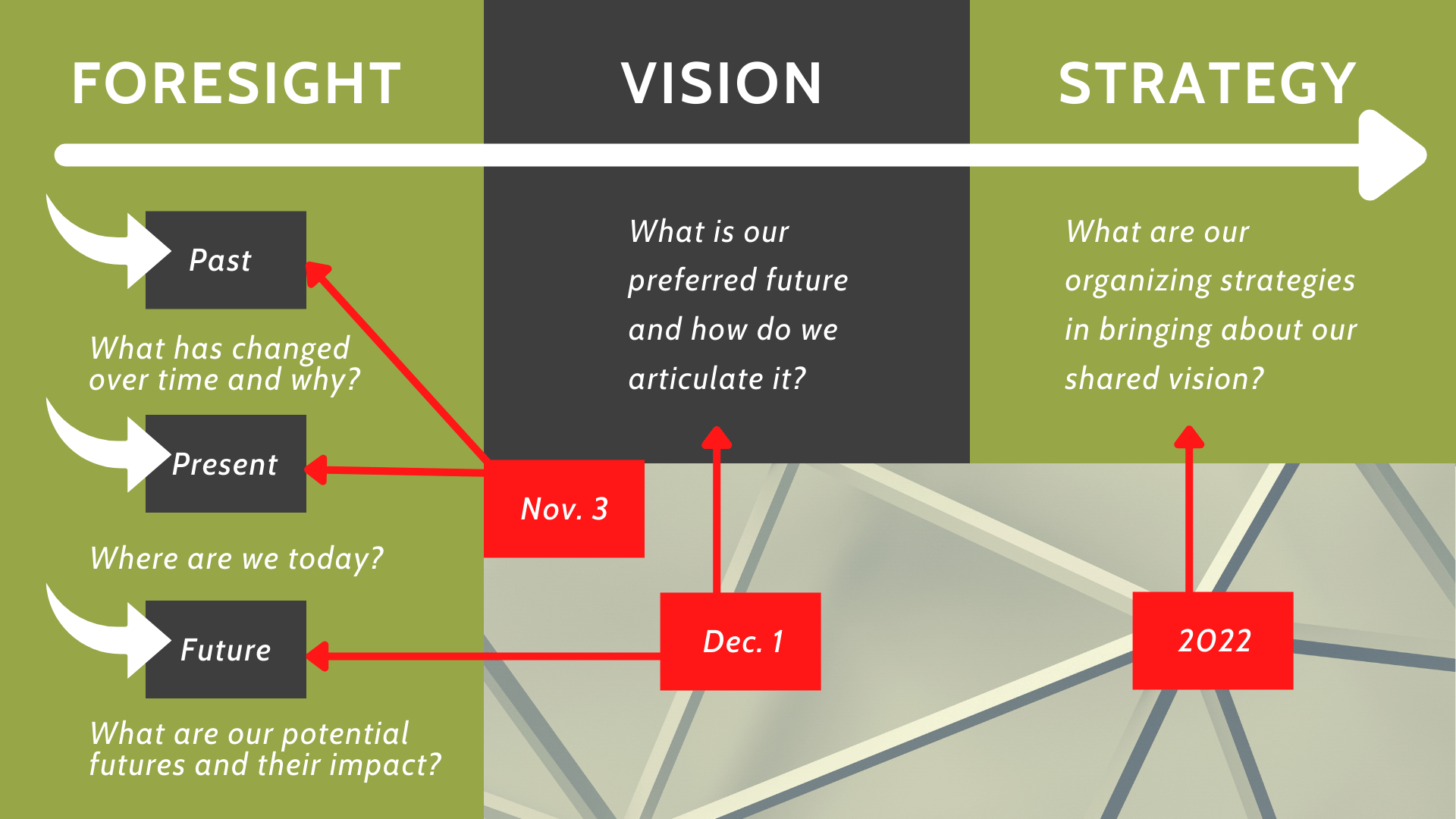
Process adapted from 4 Steps to the Future, Lum, Richard, Foresight Vision Strategy (2016)
Building Our
Shared Timeline
Minnesota Milestones in Aging
Recognizing that our state's past is key to understanding our future, the first activity we engaged in was an exercise to step back and create a shared understanding - across hundreds of diverse experiences - around the major milestones the aging sector has experienced over the past fifty years. While there were a multitude of entries, some of the most commonly mentioned experiences can be noted on the timeline below.
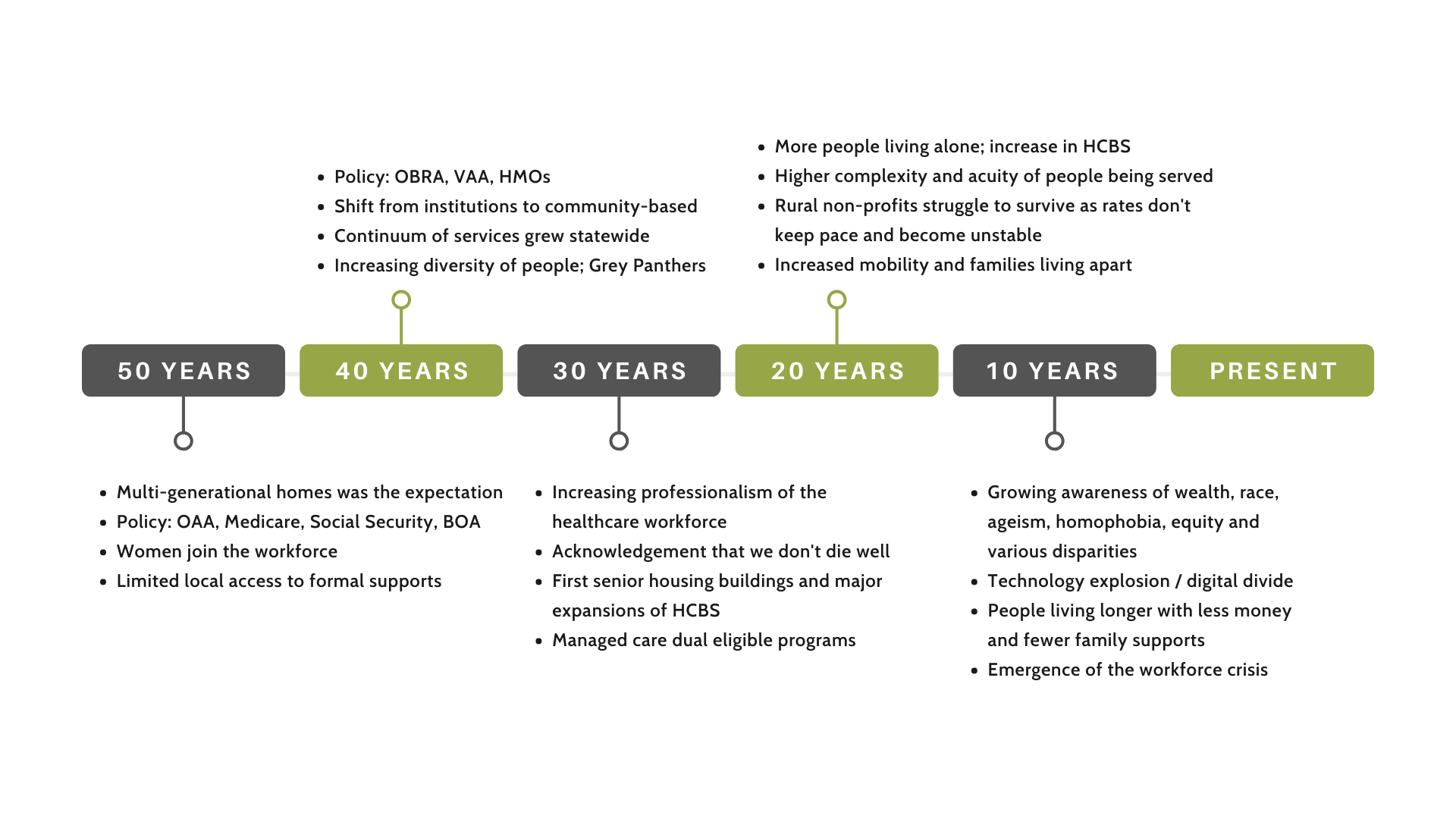

10 Years Ago
- Internet access as the source of timely information
- Growing awareness of wealth, race, equity and disparities
- Discrimination and marginalization of BIPOC communities
- Increased diversity in older adults
- Increased understanding of social determinants of health
- Increased value of HCBS outstrips investments in services
- People shift to work differently, longer, with changed expectations
- Living longer
- Growing focus on ageism, racism, homophobia, etc.
- Expansion of options; technology in care delivery and community supports
- Emergence of mental health discussions
- Limited access to affordable and accessible housing
- Later marriages, children
- Technology explosion - digital divide in access and experience
- Significant improvements in the designed environments for older adults
- People living longer with less money and family supports
- Emergence of workforce challenges as growing crisis
- Increase in respite and other "new" services coming online
- Growth and consolidations increased in aging service companies
- Strengths-based lens on aging grows
20 Years Ago
- More people living alone; increased use of HCBS
- Increased diversity of older people; initial recognition of disparities
- Shifting food sources and diet - increased rates of diabetes/obesity
- Discrimination and marginalization of BIPOC communities
- Major advances in cardiovascular health and longevity
- Policy: Senior Linkage Line, deinstitutionalization
- Large increase in Assisted Living
- Non-profit rural providers struggle to survive
- Middle market begins to get edged out
- Growth in person-directed care practices
- Higher complexity and acuity of people served in aging services
- Increased mobility and likelihood of families living apart
- Rates don't keep pace with expenses and become more unstable
- Improvements in care for dementia, memory loss and other healthcare needs
- Older adults seen as marketing segment - new products come online
- Move towards mega health systems; increased access to clinics and online services
30 Years Ago
- Increased diversity of older people
- First senior housing buildings; expansions in community-based services
- Notable changes in family structures
- Managed care dual eligible programs
- Increased protections for vulnerable adults
- More people living on the edge of poverty; increased homelessness
- Better health/longer lives; initial acknowledgement of demographic shift (Project 2030)
- Policy/practice: pensions going away, data privacy emerging
- Discrimination and marginalization of BIPOC communities
- More acceptance of asking for help
- Increasing professionalization of the healthcare workforce
- Economic security in older age declines
- Changed volunteer habits
- Acknowledgement that we don't die well

40 Years Ago
- Predominance of nursing homes (retirement homes) as the sole option; desire to age at home
- Policy: OBRA, Vulnerable Adult Act, AIDS, HMOs
- Shift away from "institutions" towards community-based settings
- Structure shifted to Skilled Nursing Facility; moratorium began
- Diversification of service lines: continuum model of care grew
- Increased diversity of older people; Grey Panthers
- Shift began towards deinstitutionalization of services
- Discrimination and marginalization of BIPOC communities
- Establishment of Adult Day Services - and hospice was on the horizon
- Increasing professionalization of the healthcare workforce
- Changes in family structures

50+ Years Ago
- Expectation was people aging in multi-generational homes
- Caregivers were not publicly identified or defined
- Discrimination and marginalization of BIPOC communities
- Family systems shifting; less supports
- Older adults more likely to be seen as "wise" elders
- Major policy: Older Americans Act/Medicare/Social Security, establishment of MN Board on Aging
- Women join the formal workforce
- Gerontology as a concept began
- Hospital/Nursing Home expansion (Hill Burton Act)
- Smaller wealth gaps; no planning for the future
- Urbanization begins to shift rural life and economies
- Limited access to formal supports; travel to seek services outside the local community were more the norm
- Started to see more diagnosis, education and research/learning
- Institutions taught restraints, and terms like "senile" were used instead of "dementia"
- Stigma was evident: certain diseases, "County Poor Farms," etc.
Milestones developed by Summit attendees on November 3, 2021
Drivers of Change
From discussions on immigration reform or changing family dynamics to technology innovations and the intersectionality of racism and ageism in our polarized politics, we then identified the most common themes driving change in the aging field:
- Demographics - our society grows older and more diverse each day, having never seen this many older adults.
- Economics - from historic budget priorities to today's workforce or purchasing power, older adults are an economic force.
- Systemic discrimination - at the crossroads of ageism and racism live marginalized poor women, caring for poor women.
- Policy - so much of aging, from how we pay for services to how we regulate elements are driven by state and federal policies.
- Social values - views from individual health to working families have a major impact on systems and the experience of aging.
10 Years Ago
- Demographics
- Economics
- Systemic discrimination/marginalization
- Technology
- Policy
- Science/Medical Advances
- Cultural/social values
20 Years Ago
- Demographics
- Economics
- Policy
- Science/Medical Advances
- Technology
- Systemic discrimination/marginalization
- Healthy choices
- Access
30 Years Ago
- Demographics
- Economics
- Policy
- Social Contract
- Social Policy
- Systemic discrimination/marginalization
- Healthy choices
- Access
40 Years Ago
- Demographics
- Economics
- Policy
- Systemic discrimination/marginalization
- Social/Economic policy
- Social values (family structure)
50+ Years Ago
- Economics
- Science/medical advances
- Technology
- Policy
- Health choices
- Systemic discrimination/marginalization
- Access
- Social contract
- Public policy (defense; health)
- Social values
Drivers developed by Summit attendees on November 3, 2021.
Grounded in this look back, we engaged in a real-time review of where we sit today as a state - managing through a global pandemic that disproportionately impacts older adults, leading in a racial reckoning, responding to the collapse of a career workforce and new levels of strains on family, friend and community caregivers.
Five Phases of Resilience
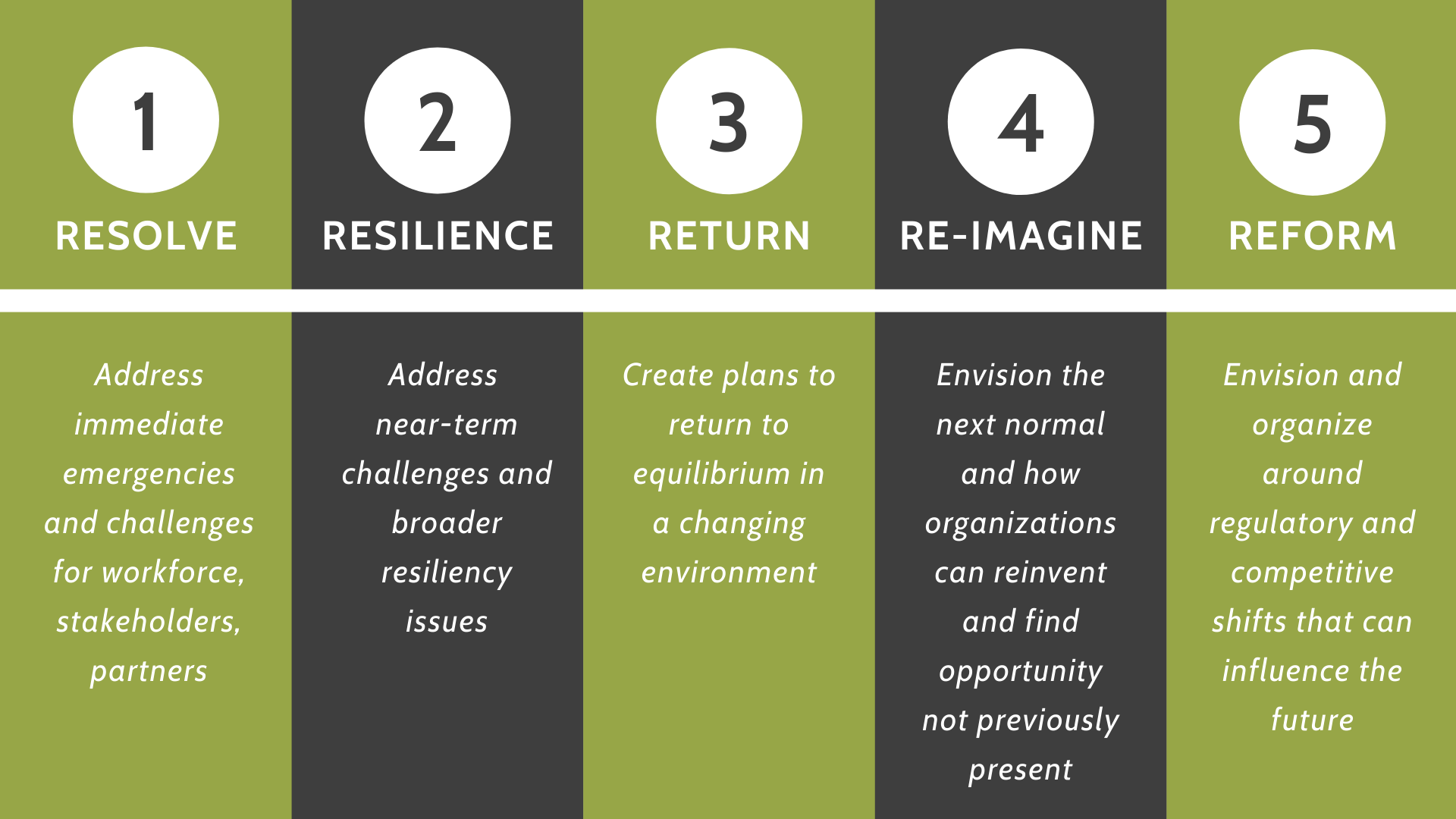
Beyond Coronavirus: The Path to the Next Normal (McKinsey, March 23, 2020)
Background Materials on Strategy and Our Operating Environment:
The Importance of Foresight to Imagine, Anticipate Change and Influence the Future
Age-Friendly Briefs
A set of briefs were discussed on November 3 which explore current approaches and impact of the Minnesota Board on Aging, Department of Human Services, and Minnesota’s aging network (an interconnected structure of state and local agencies that help older adults live independently in their homes and communities).
The briefs offer a better understanding of the foundation created by our existing work that can guide us as we develop strategies for Age-Friendly Minnesota. While not exhaustive, they aim to capture major ideas, prompt needed questions and discussions, and help us identify priority opportunities for greater impact and better outcomes.
Seven of the following briefs are issue-specific, and one titled “Age-Friendly Integration,” discusses broader strategies for helping the aging network bring age-friendly approaches to local governments, funders, healthcare systems, and others.
Opportunities for Change
Proactively addressing today's challenges
Before thinking in bigger, bolder ways about the future, we recognized we needed to have a clear picture of the current environment and the unique times we live in. Together, from various vantage points, we are positioned to meet the challenges and opportunities of today head on. Most notably, our opportunities to address in the future must include:
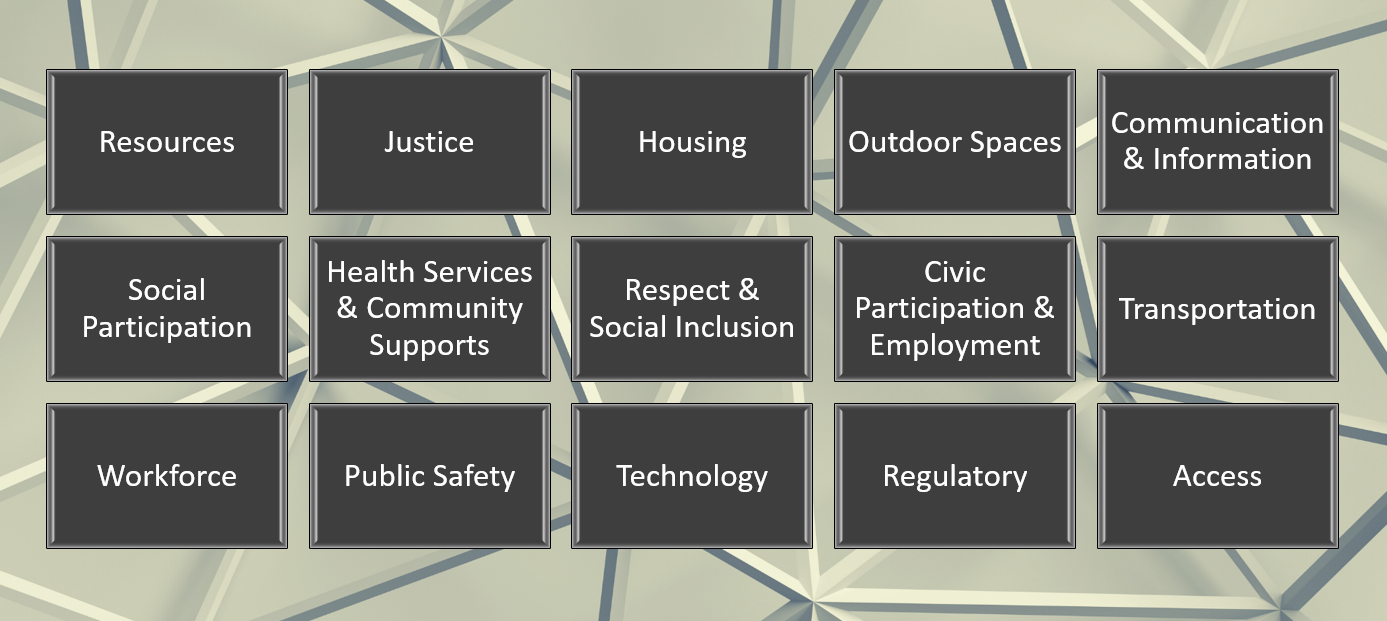
Additional detail provided by participants within each of these areas:
Resources
- Personal resources exist for individuals needing services today and tomorrow
- Needed funding for those without resources is in place to fund essential support net programs
- Sustainability is a focus - proactively addressing demographic shifts and the influx of short-term federal funds
- Age-Friendly Philanthropy leads the nation in a coordinated approach by foundations
- Grants, seed funding, and state programs are streamlined to support small and culturally-specific organizations
- Proactive, supportive collaboration exists with insurance companies and health plans
Justice
- Growing awareness and action across all systems to champion diversity, equity, and inclusion
- Closing disparity gaps for older adults, which can compound over the course of a lifetime
- Public leadership, acknowledgement and action on Ageism/Anti-ageism
- A positive narrative and perception of aging fights negative stigma and fears of aging
- Data is collected and research disseminated showing the assets and disparities of marginalized Minnesotans
- Culturally competent services grow - particularly for BIPOC and LGBTQ+ communities
- The public value, respect and contributions of older adults grows in time
- Intergenerational and holistic approaches to housing and care ensure culturally responsive services for all Minnesotans
Housing
- Ensuring affordable options (truly affordable options)
- Expansion of the low and middle-market options
- Diversity of product moves away from one-size-fits-all big box offerings
Outdoor Spaces
- Community infrastructure across Minnesota cities and counties is enhanced to offer safe sidewalks, crosswalks, bike lanes, etc.
- Safe and engaging intergenerational convening spaces are available in all seasons
Communication & Information
- The "Digital Divide" is closed through in-person resources, digital literacy and universal access to phone/internet
- Complexities of the aging systems are reduced and a simple, accessible, easy-to-navigate partner is available
- Resources to plan for our aging at the individual level are robust, and well-utilized
- Regular public education builds awareness for older adults, families and organizations
- Collaboration and information sharing is easy and trusted across organizations
Social Participation
- Social isolation is reduced - particularly during pandemic as more people have grown empathetic
- Volunteerism is increased - particularly of older adults and for older adults
- Participation in dementia-friendly efforts at the community level are expanded
- Income disparities are not a barrier to meaningful community engagement
- Virtual communities are accessible, understood and inclusive of older adults
Health Services & Community Supports
- A variety of supportive services are accessible in communities across the state
- Effective community-based offerings like Adult Day are bolstered and become community hubs
- New models are launched, like partnerships with public libraries and community education
- Mental health needs of older adults are recognized and provided for in an integrated approach
- Resources, research, information and other supports address dementia, Alzheimer's
- Equitable opportunities for services is the expectation for all - particularly during the pandemic
- An immediate reduction in the closures of programs and organizations ensure communities have adequate options
Respect & Social Inclusion
- The value of older adults in the community are showcased - such as older adult performance groups; community education
- Social isolation is reduced; older adults become/stay an active part of their communities
- Families, friends and informal networks grow in their supportive skills and recognition as caregivers
- Faith communities focus on social connectivity and evolving needs of the older adults in their services
Civic Participation & Employment
- Policymakers look to older adults with great value to co-design any services - "nothing for us, without us"
- Minnesota harnesses and leverages the many skills and abilities of older adults willing to stay engaged
- Job sharing or creative employment models retain/re-engage a greater number of older people in the workforce
Transportation
- Trusted transportation options are available, reliable, and affordable across the state
- Programs are integrated thoughtfully into other systems and services
- Barriers to volunteer drivers are eliminated and community supports grow
- Operational processes are safe and easy to navigate
Workforce
- The value of caring for older adults and professions across the aging sector are respected and valued
- Caregiving by families, friends and the community is recognized, respected and celebrated
- Caregiving careers are desired and sought-after by society eliminating staffing shortages
- Wage disparities are reduced in aging services - the lifetime of low-wage work is replaced with family-sustaining wages
- Statewide solutions - such as immigration - address underlying demographic shifts and lesson competition across all sectors
- A leadership development pipeline and succession planning are in place for all critical roles in the aging network
Public Safety
- Ageism/Aging is viewed as a public health issue, elevating prevention and preparation initiatives for all Minnesotans
- Elder abuse in all forms is reduced: physical, sexual, emotional, financial/material exploitation, neglect, abandonment, and self-neglect
- Emergency preparedness planning expands to fully include older adults as a key audience and partner
- Future crisis management efforts understand the unique assets and needs of older adults
Technology
- Technology innovation and acceleration is focused on the aging sector
- Capacity of small organizations is bolstered by effective remote services, supplemental staff supports, etc.
- Breakthroughs begin to proactively address family genetics
Regulatory
- HIPAA and PHI are revised to ensure they are not barriers to continuity of care
- Starting with CMS, government partners incent, recognize and fund innovation
- Flexibility and creative approaches meet safety and compliance standards while streamlining bureaucracy
- At the human level, we see less paperwork; more client care
- At the community level, we see an aging lens applied to all services - such as zoning for intergenerational options
Access
- All rural communities have reasonable access to the various service lines needed to meet community needs
- Small home and community-based service organizations are viable and available
Other
- Leaders must think big and bold about change - this isn't the time for small moves
- Older adults without families or supportive structures are not forgotten
- Champion policymakers who understand aging systems in the Legislature and Congress emerge and are fostered
- Existing resources we have today are brought together in more intentional ways to maximize results
- As planning occurs, we should build on what works; not feel afraid to close down what doesn't
- Look at the full integration of financing and regulatory systems, from federal funding streams to local decisions
- Streamline and simplify this really complex system (set of systems)
- Leaders fully engage fully in collective policy and non-policy solutions
- Change is hard, crisis is painful, but a sector in crisis is prime for transformation
- We can't do this alone - leaders across silos must fully engage fully in collective policy and non-policy solutions
- This work is best if co-designed, community-driven, and elder-informed at every stage
- What are our common definitions: what does it mean to age well?
Note: Many comments fall within the eight domains of an age-friendly state, listed below.
Challenges and Opportunities developed by Summit attendees on November 3, 2021.
Our Preferred Future
Designing action steps to see our vision achieved
In an initial review of the statewide feedback that was generated at the December 1, 2021 Summit, the following outlines the emerging sentiments from 24 breakout rooms of state leaders that were asked two questions:
- What are the key elements of your preferred future for aging in Minnesota?
- What are responsive actions we can take together to achieve that future?
Emerging Themes
- Aging and Equity
- Economic Infrastructure and Policy
- Community Caregiving
- A Supported Workforce
- Housing and Supportive Services
What follows are specific ideas generated by AGEnda participants in each of these five big themes of possibilities.
Aging and Equity
We seek a future where...
- The aging population is an essential asset with valuable knowledge and experience, worthy of respect and quality care.
- Human contact and community are central for health and life.
- A strength-based, person-centered approach across the continuum of care and throughout all life stages.
- Aging voices are integrated to best inform interventions and address needs.
- Diverse voices are reflected and co-design new policies for the future.
- Self-determination and individualized decision-making are advanced in safe, culturally sensitive environments.
- Cultural enrichment and engagement occur with a multi-generational lens.
- Discrimination, agism, and bias, are dismantled in current systems.
- Intergenerational interactions lead to basic needs being better met.
- Social determinants of health and social wellbeing are inclusive.
- Universal access to affordable broadband, Wi-Fi, and data are accessible (especially in rural).
- Intentional, multicultural, responsive and anti-ageist care is provide by medical personnel.
- Localized systems are encouraged to advance equitable education programs.
- Medicine and healthcare are equitably available and tailored for all communities.
To accomplish this, we could...
- Intentionally incorporate diverse voices in decision-making, co-designing policies, or other interventions.
- Learn from other cultures how to respectfully utilize older adults.
- Liaison more effectively at the Cabinet level.
- Foster champions in the Executive Branch.
- Elevate language on aging to raise awareness and strive for alignment.
- Promote utilization of intergenerational planning.
- Support structures that advance age-friendly communities.
- Require education aimed at combating ageism.
- Coordinate public information campaign efforts.
- Recreate social dependence between the generations.
- Actively work towards anti-ageism efforts and address crosswalk to generational poverty.
- Actively work towards anti-ageism efforts and address crosswalk to generational poverty.
- Show the important role and contributions of the older population in the workforce.
Economic Infrastructure and Policy
We seek a future where...
- Older adults are not a “budget burden” but drive policies and are prioritized in shared agendas across agencies.
- The costs of aging services are lessened.
- Fair reimbursement waivers offer benefits like healthcare via flexible service delivery options (i.e., telehealth or community-based services).
- The economic impact of an aging population is prioritized and addressed through policies.
- Pharmaceutical research/insurance is equitable and access to services is simplified.
- Universal healthcare and Medicare/Medicaid keep up with increasing costs and offer simplified enrollment.
- Financing information is clear and accessible to all people before they turn 65.
- Financing is flexible and scalable, removing the spend-down asset scrutiny.
- Funding better-serves rural, indigenous, and marginalized populations to close equity gaps.
To accomplish this, we could...
- Develop an infrastructure bill that includes universal broadband and data privacy.
- Adequately reimburse public programs.
- Invest in preventative technology.
- Engage cross-system partners to promote a shared financial responsibility of the community.
- Advocate for older adults as a Cabinet-level focus within the Executive Branch.
- Develop resources for securing basic livelihood, income, education, and home ownership by removing access barriers.
- Orchestrate a universal package of services where older adults can thrive with individualized care and support for a purpose post-retirement, (i.e.: skills, mentor, etc.).
- Direct funds to critical elements: family wellbeing, childcare, caregiving, rural and indigenous areas.
- Encourage CMS to approve new channels of care for supportive interventions.
- Create new intergenerational opportunities, like shared sites for older adults and childcare.
- Utilize the State of Washington model to help older adults not spend down their resources.
- Conduct outreach about future planning earlier in life so everyone understands micro-investment, insurance options, etc. and the public social contract in their LTSS.
- Address how insurance companies and payment are drivers for policy change and require baseline training to law makers to have consistent definitions and understanding related to equity and other “isms.”
Community Caregiving
We seek a future where...
- Caregiving is understood and highly valued.
- Family, friend and community caregivers receive the support they need to thrive in their roles.
- Employers respect the need for employees to care for others through flexibility, PTO, and respite.
- Family, friend and community caregivers are given fair compensation, support, and benefits.
- Isolation and issues of abuse, neglect, and/or exploitation are reduced/eliminated.
- Older adults are empowered with tools and resources to form their own caregiving team.
- Integrated families can have dinners without LTC shame.
- Caregiving is reframed as a lifespan issue.
- More families, friends and community caregivers have cultural competency training.
- SMART homes/communities offer a broad range of integrated, in-home services.
- Community-based PCA’s assist multiple individuals needing intermittent or light services.
- Individuals who are aging without supports (solo agers) have access to equivalent LTSS so they can age in place.
- Paid family leave and in-home care with sustained support is enhanced.
- Access to trusted care is personal, equitable and inclusive.
To accomplish this, we could...
- Redefine caregiving as more than just care for an older adult (i.e.: Aging Consultant).
- Consider intergenerational caregiving and care through a “care exchange” or “co-care.”
- Guarantee workplaces are responsive to caregiver needs and supports.
- Provide supports within the community for those living alone.
- Identify assets before deficits.
- Learn from different cultural communities and replicate successful elements of living.
- Safely promote mobile services, e.g., clinics, personal care/beauty services, etc. in-person.
- Structure a paid-worker model that recognizes the caregiver.
- Develop a concierge of virtual social workers and ensure caregivers are trained for active engagement in the process of end of life.
- Promote technology and broadband in LTC and make it affordable and accessible for rural or underserved areas.
- Promote early interventions and prevention efforts, such as genetic innovations.
A Supported Workforce
We seek a future where...
- Career caregivers for older adults is understood and highly valued.
- Career caregivers receive the support they need to thrive in their roles.
- Livable wages and healthcare benefits for career caregiver roles or gig workers with flexible schedules are plentiful.
- Retired adults connect in new ways that contribute to the community.
- Organizations make accommodations for a diversity of older adult talents in voluntary, employment, or entrepreneurial roles to fill in workforce gaps.
To accomplish this, we could...
- Use an asset-based approach for livable wages, PTO, flexibility, incentivized recruitment, and removed penalties for older people earning more money.
- Establish immigration reforms - creating policies which facilitate the arrival of people with needed care skills.
- Create affordable and accessible education and training opportunities.
- Incorporate trained professionals from other countries to help design/implement services.
- Develop a forum or process to support older workers in finding relevant jobs.
- Expand the AmeriCorps and VISTA Program for college students to reduce loan debt and create a pipeline for careers in aging.
- Construct more flexible regulations to allow people at younger ages or with experience or skills to do partial pieces of jobs (high school students, Army medics, etc.).
- Promote aging services careers as valued professions.
Housing and Supportive Services
We seek a future where...
- Older adults have safe, affordable housing (rural and urban).
- Older adults stay in their homes for as long as they want.
- Inclusive policies and supports across a broad array of living situations (e.g. intergenerational homes, community-based living, etc.).
- Insurance companies pay for more and different supportive services (e.g. home delivered meals, transportation, all healthcare).
- Communities are multicultural and person-centered
- Isolation is reduced/eliminated.
- Builders avoid negative aging assumptions, and reflect considerations for varied location, full lifespan, and sustainability.
- The focus of a continuum is reframed around home and community-based services, not the nursing home.
- AI/SMART technology assists older adults as they age.
- Community centers serve all ages and are a hub to access respite, caregiving, and caregivers supports.
- Sustainable necessities and universal designs (i.e., stairs, doorways, etc.) within the home let people stay at home longer.
- Vulnerable adult laws protect older people.
To accomplish this, we could...
- Increase social interaction and inter-generational input in the built environment.
- Ensure rent control and affordable housing policies help stabilize the population.
- Make low-cost, mobile housing or retrofit homes available.
- Provide more support at the block level and create efficiencies in community-based supportive service dollars using targeted/localized programs/funding.
- Advance ownership equity programs and vouchers for supportive services (informal caregiving network payments).
- Promote a diversity of housing styles and different living models.
- Develop social services and an on-call tech support 24/7 to assist seniors with tech issues and assistive technologies (e.g. large print guides and resources to increase technology independence).
- Make housing and services culturally supportive with opportunities for healthy, active living and home delivery services for medicine or vaccines.
- Mobility support is readily available and accessible through safe transportation options (i.e. non-medical appointments).
- Design policies to ensure AI complies with HIPAA requirements.
Vision and Priorities
Minnesota's AGEnda is taking shape
Vision
Minnesota is a great place to grow up and grow old, where all Minnesotans are treated with dignity and respect, and where a spirit of well-being is advanced through policies, programs and other solutions.
Priorities
- Inclusion and Equity: We will be valued, respected, empowered, and free from discrimination, and will have access to equitable services that are appropriate for us, regardless of age, income, physical or cognitive ability, sexual orientation, gender identity, religion, geography, race, ethnicity, or culture.
- Life at Home and in the Neighborhood: We will live in the accessible homes and communities that we desire and have access to the quality services and housing we need to do so - safely, comfortably and affordably.
- Health and Well-being: We will have convenient, timely, and affordable access to activities we enjoy, and the care and services we need, to optimize our physical health, mental health, and overall well-being
- Social and Community Connections: We will be connected to the people and things that matter to us and have lifelong opportunities to participate in and contribute to our communities.
- Caregiving and Dementia: We will be prepared to care for each other as we age, and be supported in our roles as caregivers
- Individual Rights and Protections: We have the right to be educated and empowered to promote our rights and to have our rights respected.
- Emergency Preparedness: We will live in communities that are ready to keep us safe, connected, and autonomous before, during, and after a crisis - be it public health, weather, or other disaster.
- Age-Friendly Integration: We will explore high-level strategies related to coordinating and partnering with local governments, funders, and others.
- A Moral Imperative: We will see financial investments in aging reflect the demographic shifts and community needs for funding aging services.
- Supported Workforce: We will support career caregivers and other workforce personnel serving older adults are highly valued and receive the support they need to thrive in their roles.
2023 Legislative Session
Identifying initial shared policy solutions
On October 7, 2022 the AGEnda co-conveners held a free, public 2023 Legislation Workshop designed to identify policy solutions that met the emerging themes and principles listed above.
What emerged were a series of sentiments from stakeholders to guide our shared work in the 2023 Legislative Session:
- Focus on major emergent issues first (e.g. workforce collapse, food insecurity, etc.)
- A priority must be ensuring equitable access to services for ALL Minnesotans
- A key opportunity is changing society’s mindset about the value of older adults and aging as a state priority
- To do this work, we must strengthening tables where we can work together
- We should stay opportunistic to support areas of shared interest (particularly equity, waiver parity, etc.)
In addition, an equity lens must be taken on all our policy proposals - asking questions such as as:
- Who will be impacted or benefit by our policies?
- Are we doing this with older adults or for older adults?
- Who will our policies benefit? Who will they burden?
- Whose voices are not being heard?
- Does this impact one group more than others?
- What are the power dynamics at play?
In December, 2022 the Minnesota Leadership Council on Aging also held their annual Summit - exploring these issues further.
What emerged from the workshop and Summit were two kinds of issues - policy priorities for 2023 and larger conversations where more detail was needed:
Immediate Shared Policy Topics
- LTSS/HCBS rate increases focused on workforce wages/benefits
- Senior nutrition funding
- Public information campaigns (focus on the value of older adults, ageism, underserved communities)
- Age-Friendly Council continuation
- A Legislative Task Force on Aging
- Phase 2 of the Vulnerable Adults Act work
- Closing the digital divide through broadband for all older adults
- Creation of a Native American Elders Office
Longer-Range Policy Conversations
- A lifespan approach to waivers
- Supporting family caregivers
- Affordable senior housing (homeless programs; multigeneratonal living)
- Live Well at Home reforms
- LTC Financing reforms
- Improving the workplace (enhanced pipeline, training and culture efforts)
Source: 2023 Legislation Workshop Jamboards
2024 and Beyond
From Community Engagement to an Age-Friendly Blueprint
In September 2023, the Age-Friendly Council, with support from Minnesota Leadership Council on Aging and the Minnesota Board on Aging convened a statewide conference that included a series of seven community engagement sessions around the state to begin developing a 10-year, multisector blueprint for shared work.
After reviewing feedback from hundreds of Minnesotans, four high-level domains are starting to take shape:
- Connected Communities
- Optimizing Health and Longevity
- Emergency Preparedness, Individual Rights and Safety
- Economic Security and Vitality
To learn more about the corresponding goals and activities that are emerging - as well as getting involved in shaping this work as a subject matter expert or lead organization for an issue - visit the Age-Friendly website today. To advance specific policy proposals, you can also request an endorsement by the Minnesota Leadership Council on Aging.
Co-Conveners
-
Age-Friendly Minnesota Council
Learn More -
Minnesota Leadership Council on Aging
Learn More
Minnesota Board on Aging
Learn MorePartners
-
Minnesota Diverse Elders Coalition
Learn More -
Finish Strong Funders Network
Learn More
Minnesota Leadership Council on Aging
1265 Grey Fox Road, Suite 2, Arden Hills, MN 55112
© 2024 Minnesota Leadership Council on Aging. All Rights Reserved.
